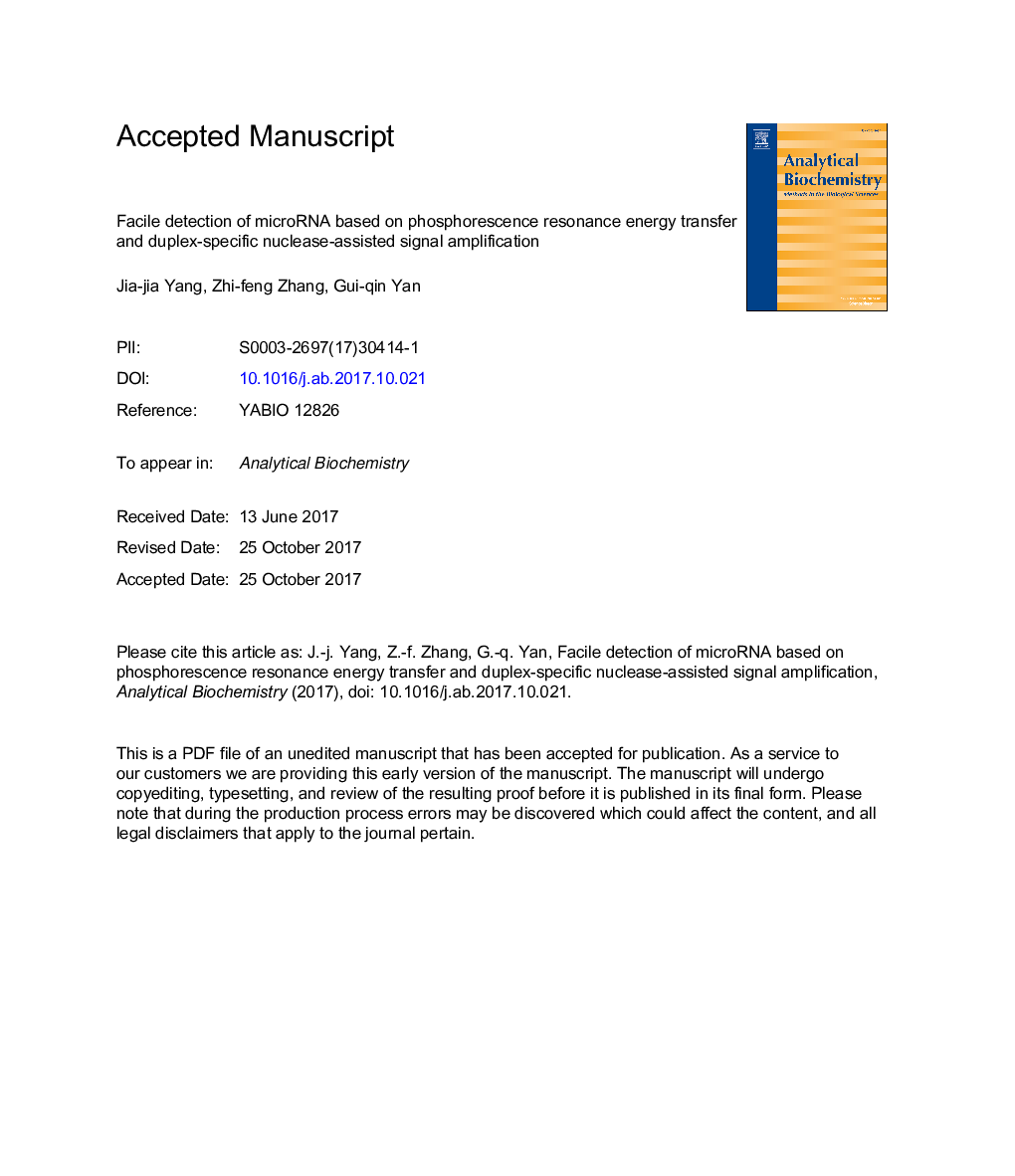| Article ID | Journal | Published Year | Pages | File Type |
|---|---|---|---|---|
| 7557193 | Analytical Biochemistry | 2017 | 31 Pages |
Abstract
MicroRNAs (miRNAs) play an important role in many biological processes, and its level in plasma and other biological fluids is closely related to many diseases. In this work, a selective room-temperature phosphorescence (RTP) detection method for miRNA was developed based on a duplex-specific nuclease (DSN) -assisted signal amplification strategy and phosphorescence resonance energy transfer (PRET) between poly-diallyldimethylammonium chloride-modified quantum dots (QDs@PDDA) and 6-carboxy-X-rhodamine-modified miRNA sequences complementary oligonucleotide (ROX-ssDNA). The positively charged QDs@PDDA could adsorb negatively charged ROX-ssDNA by electrostatic interaction, whereas the RTP signal of QDs@PDDA could be efficiently quenched by ROX-ssDNA via PRET. In the presence of microRNA-21 (miR-21) and DSN, miR-21 hybridized with ROX-ssDNA initially to form a DNA-RNA heteroduplex as the substrate of DSN, then ssDNA in DNA-RNA heteroduplex would be cleaved into small fragments by DSN and liberate miR-21 to hybridize with another ROX-ssDNA. Eventually, due to weak interaction between ROX-ssDNA fragments and QDs@PDDA, PRET efficiency continually decreased whereas the RTP signal was significantly amplified. By employing the strategy above, quantitative detection of miR-21 in the range of 0.25-40Â nM with a detection limit of 0.16Â nM was realized, showing excellent performance with simplicity, good selectivity and the ability to be a promising method for miRNA detection.
Related Topics
Physical Sciences and Engineering
Chemistry
Analytical Chemistry
Authors
Jia-jia Yang, Zhi-feng Zhang, Gui-qin Yan,
